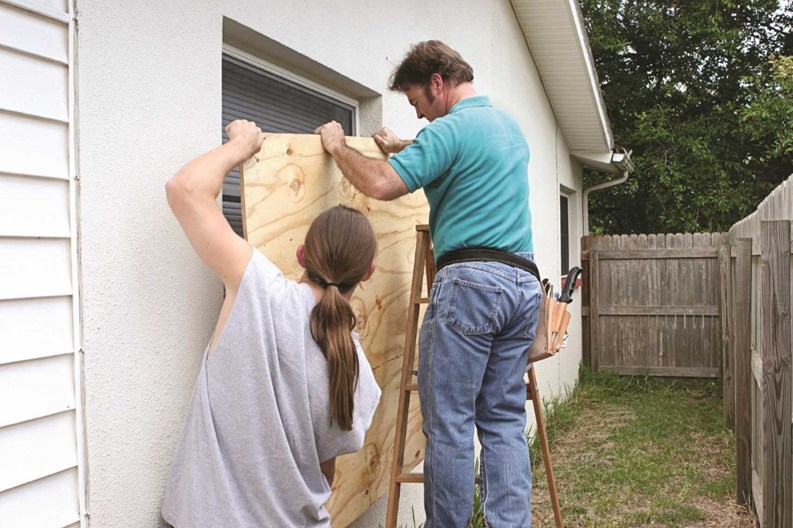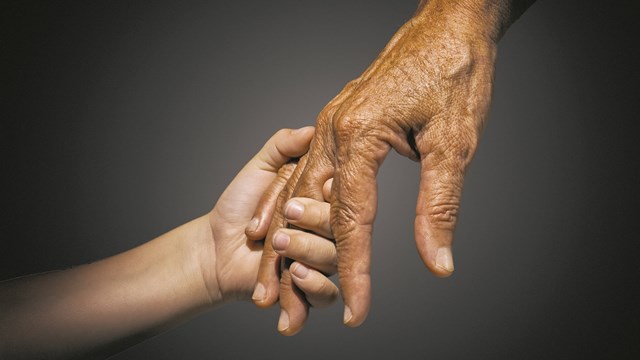For South Floridians, it isn’t news that hurricanes are a fact of life. Powerful storms have caused property damage and, sadly, many deaths with frightening regularity—including the 1919 hurricane in Key West that killed more than 800 people; Hurricane Andrew, which caused $25 million in damage in 1992, and the last, Hurricane Wilma, in 2005. Although it’s been eight years since Wilma made landfall, it’s important that managers and residents stay in a constant state of alert and prepare for what could easily happen again, even if this hurricane season it doesn’t. For some communities, this means preparing as if something were to happen, even if nothing is going to.
Stay Vigilant
“People do get complacent,” says Fort Lauderdale Battalion Chief Jo-Ann Lorber. “But now after Hurricane Sandy, people are becoming more aware again.”
Hurricane Sandy didn’t touch down in the South Florida region but it made its mark on the United States by hitting the northeast region and causing almost $75 billion in damage. “Getting people educated is a slow process, but our fire prevention group teaches what they need to know,” says Lorber.
Prior to hurricane season, which begins on June 1, Lorber is educating members of the community about hurricane preparedness by attending homeowner association meetings and conducting preparedness talks. “If you have floods, you try to recover from that and mitigate, or learn, from the past and how to prepare yourself for the future, including putting up barriers and getting sandbags if you live in a low-lying area,” she says.
Every year, in advance of the hurricane season, Bill Worrall, vice president of The Continental Group in Hollywood, also conducts hurricane preparation seminars with property managers throughout Florida. “We talk about best practices of all the components which each community should have in its hurricane preparedness plan,” he says.
In his seminars, Worrall talks about everything related to being prepared, including having cash on hand to handle post-storm emergency expenditures, securing the physical plant such as securing pumps and other expensive equipment in the building, and what the emergency generator is going to do and not going to do. While it might sound excessive to some that reviewing hurricane preparedness plans are a yearly occurrence, the reasoning behind the frequency makes good sense.
“In our business, the board is charged with a fiduciary duty to manage and run the association,” says Worrell. “However, every year boards have an election—and if board members change, it’s an educational process to bring the new board up to speed.”
Not only do board members change, but new residents arrive in South Florida on a regular basis, many of whom may not speak English. “You could have folks here from Russia or Venezuela and the community can be multilingual,” says Worrall. “Perhaps they have never experienced a hurricane before and don’t realize the risks. It should become a conversation every year.”
Getting Started
According to Worrall, everything starts with the National Hurricane Center (www.nhc.noaa.gov). “The forecasting has become more accurate, so we have a lot more notice when a storm is coming,” says Worrall. “It helps all of us to properly prepare and the more notice you have the better. Local meteorologists start talking about storms almost a week out. They talk about the storms as soon as they leave the west coast of Africa. As the storm gets closer, usually within 48 to 72 hours, you’ll have a good projected storm pass. You’ll have a good idea if you’re going to be in harm’s way.
When there’s a possibility that a hurricane will strike her territory, Lorber springs into action, first getting briefed on the happenings from the National Weather Service. Lorber then organizes conference calls with community members to spread the word. “The calls start about 56 to 72 hours before it’s moving toward us, but as things change we go into hurricane watches at 48 hours and hurricane warnings at 36 hours.”
“At this point, if there is a hurricane approaching your area, it’s important that the property manager and other building employees secure the residential building, inform your employees of their responsibilities, make a decision about evacuation (if it hasn’t already been declared mandatory by the local government) and be sure to back up computer files and store other important paperwork in a waterproof container,” says Melissa Prandi, MPM of Prandi Management in San Rafael, California, and co-author of “The Complete Idiot’s Guide to Success as a Property Manager.”
During fire inspections in Fort Lauderdale, the fire district hands out An All-Hazards High Emergency Evacuation Plan. The plan provides a universal template that assists building safety directors of high-rise buildings with developing fire safety and emergency evacuation plans for their buildings. It is important to recognize that the building owner or designee is responsible for creating and implementing such a plan. Lorber also started a web-based group for the community, so she can disseminate information to those who need it, including property managers, who can then spread this information to their residents.
Have a Plan of Action
Worrall teaches managers to go into hurricane season with a plan created by a disaster preparedness or hurricane committee. “All should agree on it and then adopt it,” he says. “Without a plan, there will be total chaos, more property damage than necessary and you’ll run the risk of a higher number of injuries and fatalities.”
He also suggests appointing floor captains or block captains onto the hurricane committee. “These are folks who will know if there are people on their block, who have special needs,” says Worrall. “These folks who need help are people who can’t get it all done by themselves. It’s great that community comes together and helps each other as opposed to people just doing it on their own.”
He suggests starting with the association’s plan and working down to an individual’s plan. “The board needs to understand the emergency powers they’ve been granted by the state legislature in Florida,” says Worrall. “For example, in the case of a natural disaster where there’s no power or Internet, they are given the power to make decisions to secure the property without voting. Be prepared by knowing what your powers are after the storm and what you’re going to need to execute.”
The plan should include many elements. For example, what do you do if the power goes out and the air conditioning system suddenly stops working? “In Florida at some point the air conditioning turns off and for people with special needs or the elderly it’s not healthy for them to stay in the building with no air conditioning,” he says. “If they are in a building with 30 floors, that’s a long way down with no elevators.”
Worrall says that residents, including managers and staff, need to plan for when they are going to leave and what shelter are they are going? Do they have pets? What will happen to them? “We go through all of these details, but you’re always going to have folks who don’t want to leave, who decide not to heed the warnings and the evacuation orders but there are risks involved.”
Lorber says that if someone in her area doesn’t want to evacuate their homes, she’ll ask them for their first and last name and the name of the nearest relative to contact. “We may tell them that if they don’t evacuate they may die and, in most cases, this scare tactic does the trick,” she says.
If her area calls for an evacuation, Lorber says it is completed by the County Emergency Division. “Police and fire departments assist with the evacuation and buses come to the area and move out the residents and we have evacuation routes,” she says.
Lorber says that the town officials cannot force people to evacuate but evacuating is probably the easiest and safest thing to do if we need to do it.
The most important point that Lorber wants to get across to managers and folks who don’t want to evacuate is the limited emergency resources that residents have from emergency responders. “Typically, they are unable to respond until winds are below 34 miles per hour, so you can be on your own for a day, whether that’s trapped for a day, injured, with the windows or walls blowing in and no help available to them,” she says. “Heed your plan. You’re on your own till the winds die down. The emergency responders aren’t going to put themselves in harm’s way either if they don’t need to.”
This hurricane season, be prepared for anything Mother Nature is going to throw at you—tornadoes, hurricanes and floods, too. Planning for a natural disaster is actually a little easier because most—especially hurricanes—provide some warning. Others, such as earthquakes and floods—don’t provide warning, but you can take steps to minimize the damage.
Lisa Iannucci is a freelance writer and a frequent contributor to The South Florida Cooperator.







Leave a Comment